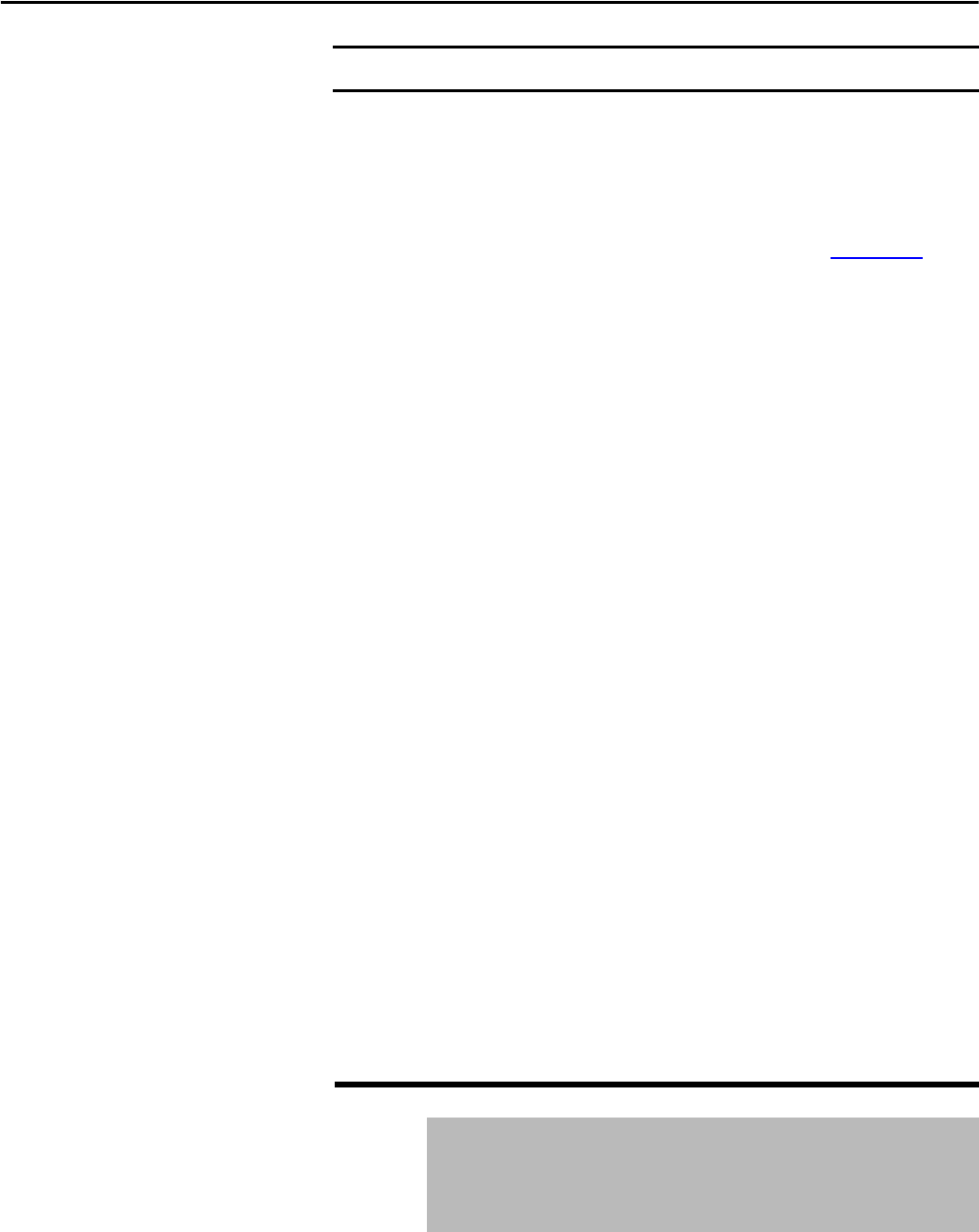Owner's manual
Table Of Contents
- Front Cover
- Important User Information
- Summary of Changes
- Table of Contents
- Introduction
- About the Drive
- Identifying the Drive by Cabinet Assembly ID Number
- LiquiFlo 2.0 Drive Component Locations
- Identifying the Power Module by Model Number
- AC Line I/O Board Description (Frame 3 Only)
- Standard I/O Board Description (Frame 3 Only)
- Combined I/O Board Description (Frame 4 Only)
- DPI Communication Ports
- Optional Equipment
- Planning the Installation
- Mounting The Power Module and Grounding the Drive
- Installing Input and Output Power Wiring
- Completing the Installation
- Using the Start-up Routines
- Programming Basics
- Parameter Descriptions
- Troubleshooting the Drive
- Verify that the DC Bus Capacitors are Discharged Before Servicing the Drive
- Determining Drive Status Using the Status LEDs
- About Alarms
- About Faults
- Diagnostic Parameters
- Common Symptoms and Corrective Actions
- Replacement Parts
- Board Replacement, Firmware Setup Procedures
- Troubleshooting the Drive Using the OIM
- Checking the Power Modules with Input Power Off
- Technical Specifications
- Using the OIM
- Installing and Removing the OIM
- Display Description
- OIM Menu Structure
- Powering Up and Adjusting the OIM
- Selecting a Device in the System
- Using the OIM to Program the Drive
- Monitoring the Drive Using the Process Display Screen on the OIM
- Displaying and Changing the OIM Reference
- Customizing the Process Display Screen
- Customizing the Function Keys
- Controlling the Drive From the OIM
- LiquiFlo 2.0 Drive Frame 3 Wiring Diagrams
- LiquiFlo 2.0 Drive Frame 4 Wiring Diagrams
- Index
- Back Cover

110 Rockwell Automation Publication D2-3518-3 - May 2013
Chapter 9
Specifies the maximum number of times the drive attempts to reset a fault and
restart when the auto restart feature is enabled.
The auto restart feature provides the ability for the drive to automatically
perform a fault reset followed by a start attempt without user or application
intervention. Only certain faults are permitted to be reset. See Chapter 10
for
more information.
When the auto restart feature is enabled (that is, Auto Rstrt Tries is set to a value
greater than zero), and an auto-resettable fault occurs, the drive stops. After the
number of seconds in Auto Restrt Delay (175) has elapsed, the drive
automatically resets the faulted condition. The drive then issues an internal start
command to start the drive.
If another auto-resettable fault occurs, the cycle repeats up to the number of
attempts specified in Auto Rstrt Tries.
If the drive faults repeatedly for more than the number of attempts specified in
Auto Rstrt Tries with less than 5 minutes between each fault, the drive remains in
the faulted state. The fault Auto Rstrt Tries are logged in the fault queue.
The auto restart feature is disabled when the drive is stopping and during
autotuning. Note that a DC Hold state is considered stopping.
The following conditions abort the reset/run process:
• Issuing a stop command from any control source. (Note that removal of a
2-wire run-fwd or run-rev command is considered a stop command.)
• Issuing a fault reset command from any active source.
• Removing the enable input signal.
• Setting Auto Restrt Tries to zero.
• Occurrence of a fault that is not auto-resettable.
• Removing power from the drive.
• Exhausting an auto-reset/run cycle.
Note that two auto-restart status bits are provided in Drive Status 2 (210): an
active status bit and a countdown status bit.
Sets the time between restart attempts when the auto restart feature is enabled.
See Auto Rstrt Tries (174) for more information about the auto restart feature.
IMPORTANT
The drive re-starts after a fault reset if the start input is still asserted.
175 Auto Rstrt Delay
Range: 0.5...30.0 sec [0.1 sec]
Default: 1.0 sec
Access: 0 Path: Dynamic Control > Restart Modes
See also: 174










